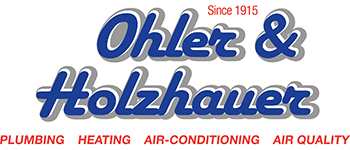
To combat increasing energy expenses and embrace sustainability, many homeowners are looking for ways to enjoy the same standards of comfort while reducing utility bills. As part of the Inflation Reduction Act, federal tax credits are available for high efficiency HVAC equipment. These credits offer a big chunk of the installation costs, as long as the homeowners use eligible equipment and submit the appropriate form.
If you’re worried about a long, complicated process, we can share something that will help! Ohler & Holzhauer Inc. hopes this guide will give you what you need to secure 2024’s HVAC tax credits. Here’s how.
Understanding the HVAC Tax Credits
These valuable tax credits for energy-efficient home improvements are just one goal of the recent Inflation Reduction Act. Energy costs affect everyone, so helping homeowners upgrade to higher efficiency utilities can benefit everyone. The main intention of these credits is to mitigate costs associated with installation and renovation projects. Of particular importance are the Residential Clean Energy Credit and the Energy Efficiency Home Improvement Credit.
But keep in mind, to claim your credits, you’ll have to fill out IRS Form 5695. Additionally, this form needs to be submitted for the same tax year any upgrades were installed, not purchased.
Maximizing Savings with the Energy Efficiency Home Improvement Credit
Through 2032, the Energy Efficiency Home Improvement credit empowers homeowners by offsetting up to $3,200 annually for installing higher efficiency home upgrades. This can be up to 30% of the total project’s cost. You should be aware that in order to be eligible for the maximum amount, it means making severel investments. For example, you’ll receive up to $2,000 for installing a higher efficiency heat pump. This can be paired with an additional $1,200 in credits for more projects in the tax year.
While new heat pump installation projects are a popular option for the tax credit, high-efficiency furnaces, air conditioners, boilers, and other HVAC systems are still eligible for this tax credit. It will help to confirm that your choice’s energy efficiency rating is high enough for eligibility.
Residential Clean Energy Credit
The Residential Clean Energy Credit provides 30% savings on a number of other residential clean energy equipment upgrades. Eligibility only applies to homeowners looking for new clean energy solutions for their home. While the Home Improvement Credit works primarily with utilities and HVAC systems, this credit targets renewable energy sources like solar and wind energy.
Some specific items in this tax credit include requiring the installation project to be finished between 2022 and 2032. But at the same time, homeowners can carry forward excess credit to offset future tax obligations. This is a great way to soften the entry into investing in clean energy.
Additional Qualifications for Energy Tax Credits
Because HVAC systems are one of the major reasons for high energy bills, these tax credits offer more access to the most energy-efficient options. But home energy efficiency can be improved in lots of other ways. Apart from the previously listed HVAC upgrades, {you could also choose|other eligible items include|you also have access to:
- Heat pump water heaters
- Electrical panel upgrades
- Upgraded electrical wiring
- Insulation, air sealing and ventilation enhancements
- High-efficiency electric stoves, cooktops, ranges or ovens
- Heat pump clothes dryers
- High-efficiency water boilers
Like the HVAC systems, you’ll need to check that your preferred make and model features the eligible energy efficiency ratings.
Three Tips for Making the Most of 2024 HVAC Tax Credits
While all the listed upgrades can improve your home’s energy efficiency, some planning ahead will ensure they offer the most long-term benefits. Maximize your HVAC tax credits with these three tips:
- Perform an energy audit to pinpoint valuable enhancements. Rely on professional HVAC assessments for crucial advice.
- Improve your home's thermal efficiency with better windows and doors.
- Explore potential rebates from utility companies for clean energy upgrades. Renewable sources like solar, wind, and geothermal contribute to community power grid sustainability.
- Remember to consider financing plans offered by service providers.
Ohler & Holzhauer Inc. Can Help You Secure HVAC Credits for 2024
Partner with local HVAC professionals like Ohler & Holzhauer Inc. for help with home energy audits and new installation projects. Our helpful installers can deliver whatever you need for a more energy-efficient home.
